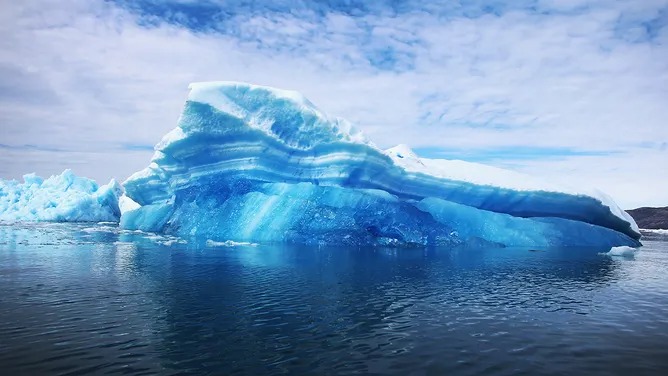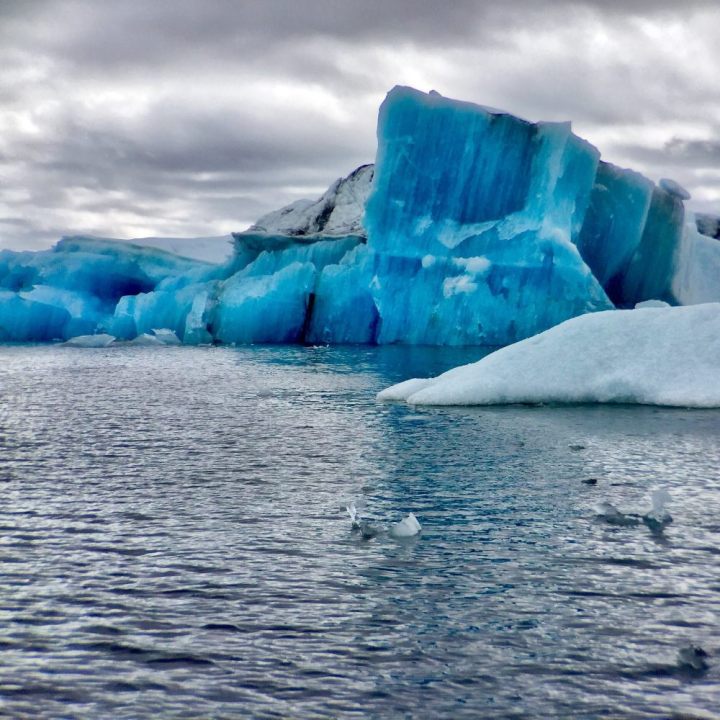Despite the fact that icebergs may appear to be gentle giants, when they turn, they possess deadly strength. The resulting tsunamis, earthquakes, and even devouring of adjacent boats are all evidence of this stunning.

In the first place, what causes such massive ice mountains to collapse? Our understanding of this process begins with a definition of icebergs. Icebergs are solid chunks of ice that have broken off from glaciers or shelf ice and are floating in the open ocean, according to the National Oceanic and Atmospheric Administration.
Even though they float in the salty sea, icebergs are composed of freshwater and are formed as a result of snowfall. There are specific criteria that must be met for an iceberg to qualify.
There must be at least 16 feet of elevation above sea level, 98-164 feet of thickness, and 5,382 square feet of surface area for icebergs. “Bergy bits” or “growlers” are anything smaller than that. They are usually large ice chunks with an elevation above sea level of at least 3 feet, covering an area of 1076-3,229 square feet. The term “growler” refers to anything smaller than that. In many cases, they are as large as vehicles or buses.
Despite its enormous bulk, an iceberg is incredibly stable thanks to gravity. Once an iceberg reaches this stage, it is unlikely that it will flip. Thus, when an iceberg forms, its chance of flipping is greatest.
The same force that flips an iceberg also causes a rubber duck to return to the same place on the surface of the water once released. Its uneven form makes an iceberg extremely unstable when it breaks away from the glacier and falls into the ocean, so it will tend to submerge most of its weight below the surface, allowing it to float in a steady position.

Watch the video below to see exactly how this occurs. During the collapse, an iceberg settles in one spot after pushing the bulk of its weight below. The video was shot on Iceland’s Lake Jökulsárlón. Icebergs break off from the Breiamerkurjökull glacier in this lake, which is famous for its icebergs.
In addition to being beautiful, icebergs can be incredibly dangerous. While tiny icebergs may not pose a danger, larger ones might cause tsunamis or even earthquakes.

It is approximately 4320 square kilometers in size, slightly larger than the Spanish island of Majorca, and it has broken off from Antarctica’s Ronne Ice Shelf. Iceberg A-76 is the world’s largest iceberg as of now. A massive object of this size can create a tremendous amount of force, which is terrifying just to contemplate.
Researchers at the University of Chicago found that icebergs capsize can unleash as much energy as some of the world’s most devastating catastrophes, easily as much as an atomic bomb. In an earthquake, the ground may shake forcefully enough to be recognized as an earthquake if icebergs flip close enough to the mainland or another solid surface to cause a tsunami.
Using a model iceberg, scientists simulated a real-life iceberg flip. Most of the iceberg is simply pushed into the ocean by gravity. The iceberg violently stirs the water and creates a wave.

Despite their dangers, icebergs are not just a concern when they overturn; consider the Titanic disaster in 1912. An undersea iceberg scraped the ship for seven seconds, ultimately destroying the British ocean liner.
In addition to finding and tracking icebergs, the International Ice Patrol warns ships of potential hazards caused by icebergs.
Source: abc-animals





